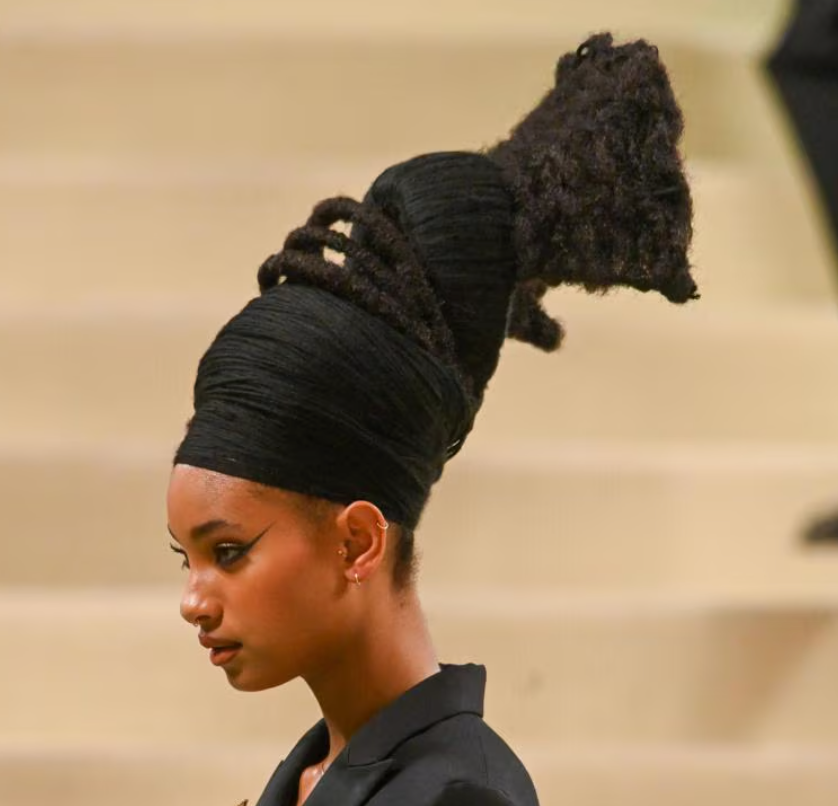In the dazzling array of styles and statements at this year’s Met Gala, one particularly compelling look was Willow Smith’s hairstyle, crafted by the renowned stylist Vernon François. This hairstyle wasn’t just a mere nod to avant-garde fashion but a deep dive into the rich tapestry of African heritage, specifically inspired by the Mangbetu tribe of northeastern Congo. This gesture of reaching into the depths of ancestral roots for inspiration is not just about style, but a meaningful exploration of identity and heritage.
The Mangbetu are known for their distinctive, elaborate hairstyles that are much more than aesthetic adornments. These hairstyles embody the tribe's cultural values, signifying social status, identity, and beauty. Traditionally, they included practices like Lipombo, which involved elongating the skull from infancy to shape the head in an elongated form, seen as a mark of beauty and prestige. The hair was then intricately styled to accentuate this shape, using natural materials, feathers, and beads, transforming each hairstyle into a unique piece of art.
At the Met Gala, Willow Smith’s hairstyle, echoing the Mangbetu tradition, was not just a personal style choice but a statement of connection and reverence to her African roots. In creating this look, Vernon François did more than style hair; he wove a narrative of returning to one’s origins, exploring cultural identity through the lens of fashion and beauty. This act of drawing inspiration from ancestral roots is a powerful form of expression for Black Americans. It serves as a bridge between past and present, offering a way to reclaim and celebrate a rich heritage in a contemporary context.
This resurgence of interest in traditional African hairstyles among Black communities in America is also a response to the broader dialogues around race, identity, and cultural heritage. By adopting and adapting these traditional styles, people not only honour their ancestors but also challenge the prevailing norms and beauty standards in mainstream fashion. It's a declaration that beauty is deeply rooted in culture and history, and that these roots are sources of strength and inspiration.
The cultural significance of such hairstyles extends beyond personal beauty. They are symbols of pride, resistance, and a continuous dialogue between the generations. As Black Americans delve deeper into their ancestral past, they find new ways to express modern identities, bridging centuries of tradition and contemporary culture with each twist, braid, and bead.
In celebrating the artistic legacy of the Mangbetu through modern hairstyles, figures like Vernon François and Willow Smith remind us of the profound ways in which our roots can inform and inspire our artistic expressions. They invite us to look back with respect and forward with hope, weaving the threads of the past into the fabric of the future. In this, they affirm that our heritage is not just history—it's a living, evolving narrative that enriches our lives and empowers our expressions today.

